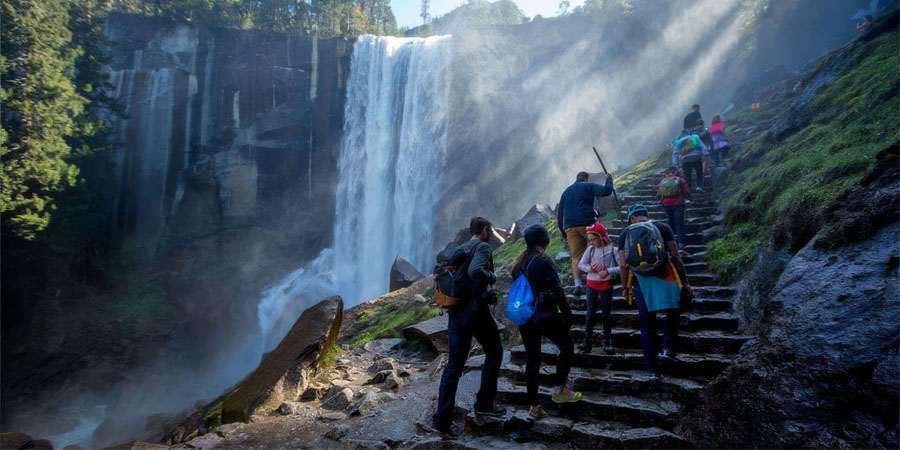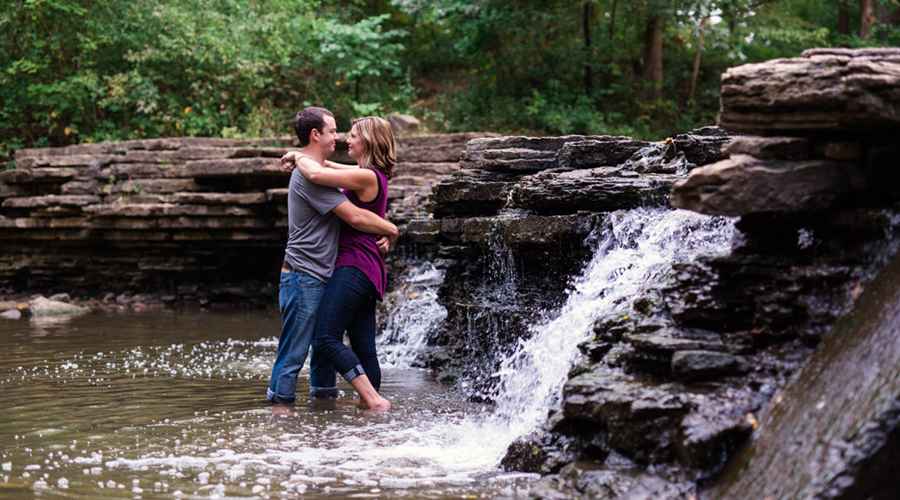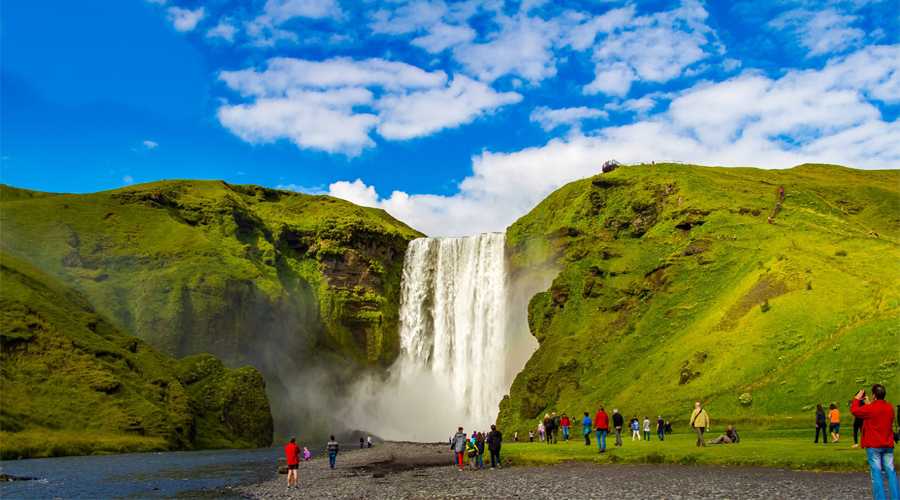Yosemite National Park is one of the most celebrated natural treasures in the United States, renowned for its granite cliffs, lush meadows, giant sequoias, and breathtaking waterfalls. Among its many wonders, Yosemite waterfalls stand out as spectacular symbols of nature’s raw power and beauty. Each year, millions of visitors are drawn to the park to witness the thunderous cascades tumbling down granite cliffs, often fed by melting snow from the Sierra Nevada. From towering giants to serene seasonal falls, Yosemite’s waterfalls create an unforgettable experience for travelers from around the world.
The Role of Waterfalls in Yosemite’s Identity
Waterfalls are central to Yosemite’s allure, defining its dramatic landscape and shaping the visitor experience. They not only enhance the park’s scenic beauty but also serve as a reminder of natural cycles. Most Yosemite waterfalls depend heavily on snowmelt, meaning their flow is strongest in spring and early summer, and many diminish or vanish during late summer and autumn. This seasonal rhythm makes every visit unique, giving travelers a chance to witness the changing face of Yosemite’s waterfalls throughout the year.
Yosemite Falls: The Icon of the Park
The crown jewel of Yosemite’s waterfalls is without doubt Yosemite Falls, one of the tallest waterfalls in North America. Plunging a staggering 2,425 feet from the rim of Yosemite Valley to the base, it consists of three sections: Upper Yosemite Fall, the middle cascades, and Lower Yosemite Fall.
- Upper Yosemite Fall drops 1,430 feet in a single plunge, offering breathtaking views from its base or from vantage points higher up the valley.
- Middle Cascades tumble over 675 feet of broken whitewater, rarely visible in full except from distance.
- Lower Yosemite Fall offers the most accessible experience, with an easy trail leading to a viewing bridge where water crashes down with immense power.
Yosemite Falls is at its most dramatic in May and June, when snowmelt surges at full force. By late summer, however, the fall often dries up, reminding visitors of the delicate balance of nature.
Bridalveil Fall: The Gateway Cascade
Bridalveil Fall is one of the first natural wonders visitors notice when entering Yosemite Valley. Dropping 620 feet, this waterfall is easily identified by its wispy, veil-like spray, especially when wind currents sway its waters sideways. According to Native American legend, Bridalveil Fall was home to the spirit Pohono, who guarded the valley’s entrance. The short trail to its base offers an up-close view of the cascading mist that often drenches hikers in refreshing sprays during peak flow. Bridalveil Fall flows all year, though it is most vigorous in spring.
Vernal and Nevada Falls: The Mist Trail Adventure
For those seeking adventure, few experiences rival the Mist Trail, which takes travelers up close to Vernal Fall and Nevada Fall.
- Vernal Fall, plunging 317 feet, is famous for the rainbow-colored mist it produces on sunny days. The climb up stone steps beside the fall is challenging but provides an unforgettable encounter with its roaring waters.
- Nevada Fall, with a 594-foot drop, lies further upstream. Its thunderous power creates a phenomenon known as the “fall line,” where water hurtles through a sheer rock channel before exploding over the cliff edge.
These two waterfalls provide an exhilarating experience and are best enjoyed in spring and early summer, though Vernal Fall continues to flow year-round due to its strong water supply from the Merced River.
Illilouette Fall: The Hidden Gem
Often overlooked because it is less accessible, Illilouette Fall rewards adventurous hikers with a quieter, more secluded experience. Dropping 370 feet into Illilouette Creek, this waterfall is visible from the Mist Trail, but those who venture into Panorama Trail or Glacier Point Road areas can get better perspectives. Its lesser-known status makes it a true hidden gem, offering serenity away from the crowds.
Ribbon Fall: Seasonal Spectacle
Among Yosemite’s seasonal waterfalls, Ribbon Fall holds special prestige. Cascading 1,612 feet, it is the tallest single-drop waterfall in North America. However, it flows only in spring, vanishing by summer. Those who catch Ribbon Fall in peak season are treated to a rare spectacle of immense beauty that few visitors ever see. It is easily viewed from the western entrance of Yosemite Valley, near Bridalveil Fall.
Horsetail Fall: The Firefall Phenomenon
Horsetail Fall is famous for its rare natural spectacle known as the “Firefall.” Occurring in mid-to-late February, this optical illusion happens when the setting sun lights up the waterfall with a fiery orange glow, making it appear like molten lava flowing off the cliff. The event draws photographers and nature enthusiasts from across the globe, all hoping to capture the fleeting moment that lasts just minutes at sunset. Though Horsetail Fall is a modest 2,030-foot cascade, this fiery phenomenon has made it world-famous.
Seasonal Beauty and Best Time to Visit
The timing of a visit greatly influences the waterfall experience in Yosemite:
- Spring (April to June): Peak waterfall season with roaring flows fueled by melting snow.
- Summer (July to September): Many waterfalls shrink or dry up, though Vernal Fall and Bridalveil remain active.
- Autumn (October to November): Quieter and less crowded, but waterfalls are minimal.
- Winter (December to March): Some falls freeze into icy formations, offering a magical, serene charm.
Preservation and Respect for Nature
Yosemite’s waterfalls are timeless natural wonders, but their future depends on conservation efforts. Climate change, reduced snowpack, and rising temperatures could shorten the flow periods of these cascades. Visitors are encouraged to follow responsible practices like sticking to trails, reducing litter, and respecting the park’s ecosystems, ensuring that these waterfalls remain majestic for future generations.
Conclusion
Yosemite waterfalls are more than just scenic wonders; they are dynamic symbols of nature’s rhythm and resilience. From the towering power of Yosemite Falls to the mystical Firefall at Horsetail Fall, each waterfall tells a story of geology, climate, and cultural heritage. Visiting Yosemite provides not only a chance to marvel at these cascades but also an opportunity to connect deeply with the cycles of nature. For any traveler, witnessing the waterfalls of Yosemite is an experience that lingers long after the spray has dried from one’s face.


